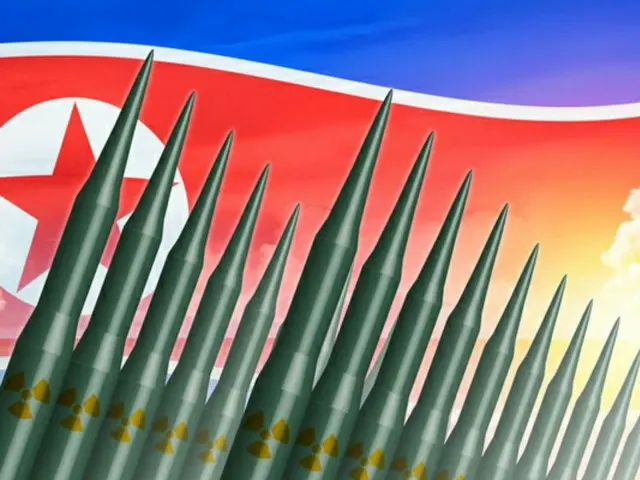reported that they conducted a test launch of a new solid-fuel ICBM, the Hwasong-18, in the presence of Kim Jung Eun. Meanwhile, a senior official in the South Korean presidential office said on the 14th of this month that North
has expressed the view that there is a possibility of launching an ICBM as early as this month. Looking back on this year, North Korea launched missiles from the previous day. continued military provocations. The end of the year is also a missile
Does it mean firing? Regarding the Hwasong-18 missile launched on the 18th, North Korea climbed to a maximum altitude of 6,518.2 km and flew a distance of 1,002.3 km in approximately 73 minutes, before reaching Japan.
The missile was said to have accurately landed on the target area on the high seas. North Korea also launched a Hwasong-18 in July of this year, but at that time it announced that it was a test launch. This is the first time I've called it "training."
The Nihon Keizai Shimbun reported, ``It appears that the plan is to give an impression that the new missile will become a military force.'' The Rodong Shimbun newspaper on the 20th said that the test launch of the Hwasong-18 was a "huge success" and that the successful launch was "
It showed off to the world the self-respect and authority of the Republic (North Korea) and the national power of Juche Korea." According to the Korean Central News Agency, Kim Jong Il, who was present at the launch exercise, said, ``Washington made the mistake of dealing with us.
"This was an opportunity to show us what choices we will make when making decisions." He added, "We must never sit idly by and watch the enemy's reckless and irresponsible military actions. Furthermore, we must not take aggressive actions. respond strongly
'', he said emphatically. Kim Tae of South Korea's National Security Office, who was visiting the United States to attend the second meeting of the Nuclear Consultative Group (NCG) between the United States and South Korea to discuss matters such as the operation of U.S. nuclear forces.
In an interview with South Korean media on the 14th (local time), First Deputy Minister Hyo expressed the view that North Korea may launch an ICBM as early as this month.
Following North Korea's ICBM launch, senior security officials from Japan, the United States, and South Korea held a phone call and condemned the launch as a clear violation of United Nations Security Council resolutions.
. Additionally, the United Nations Security Council held an emergency meeting on the afternoon of the 19th (morning of the 20th Japan time). Many members of the Security Council condemned the launch, while China and Russia, two permanent members with veto power, defended North Korea.
South Korea's Yonhap news agency reported, ``The meeting ended in about an hour without any results.'' Looking back on the past year, North Korea launched missiles from the previous day. Japan, the United States, and South Korea have been busy dealing with the situation since the previous day.
Then, in March, the tactical nuclear warhead "Hwasan-31" was unveiled. It showed off its ability to miniaturize nuclear warheads and diversify delivery methods. In September, the Supreme People's Assembly (equivalent to the National Assembly) discussed security issues against the backdrop of nuclear weapons.
It was decided to clearly enshrine the policy ``Nuclear Arms Policy'' in the Constitution. In his speech at the conference, Kim said, ``We have a strategic policy that we should never change the current status of a nuclear-weapon state and should continue to further strengthen our nuclear arsenal.''
It's a judgment call,'' he said, emphasizing the government's stance to push ahead with nuclear and missile development under the constitution. On the 21st of last month, a wrap-up party was held for the military reconnaissance satellite Manlikyong 1. Lost in May and August
Although he was defeated, he succeeded in getting back on track. North Korea's Manrikyo 1 captured images of various locations including the White House and Pentagon in the United States, US military bases in Guam and Hawaii, and Busan in South Korea.
claims. Meanwhile, at the United Nations Security Council meeting that followed the wrap-up party, a number of countries criticized the launch of missiles using ballistic missile technology, saying it was a violation of Security Council resolutions.
The Rodong Shimbun dated the 14th of this month published an article looking back on the past year. He cited the reconnaissance satellite wrap-up party as the year's greatest achievement, saying, ``A new turning point in strengthening our national power has arrived.''
did. The paper on the 20th, which reported on the successful launch of the Hwasong-18, also mentioned the wrap-up party for the Manrikyo 1 and the fact that they had successfully launched a tactical nuclear attack submarine capable of carrying out nuclear attacks from underwater. to the results
He emphasized that ``self-reliance is a powerful sword that can bring about development and prosperity even in harsh environments.'' As this year draws to a close, North Korea's provocations begin and end with missiles.
are doing.
2023/12/21 10:40 KST
Copyrights(C)wowkorea.jp 5

